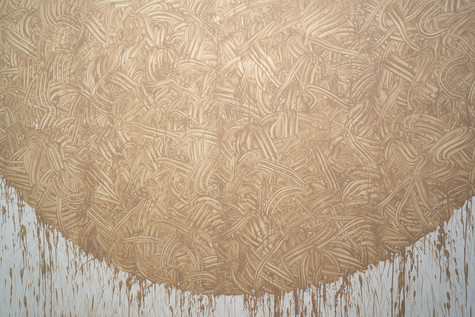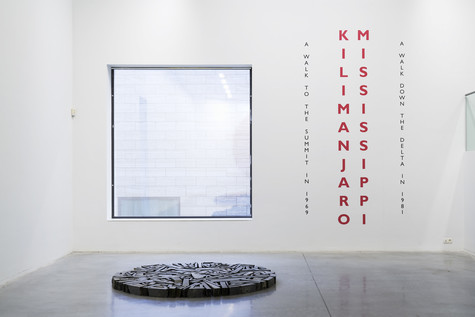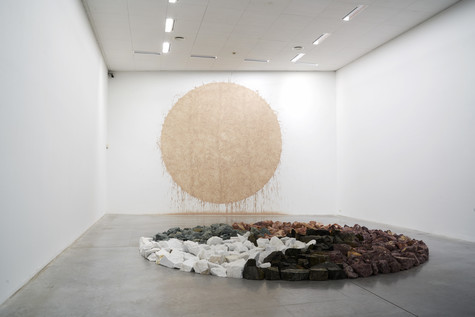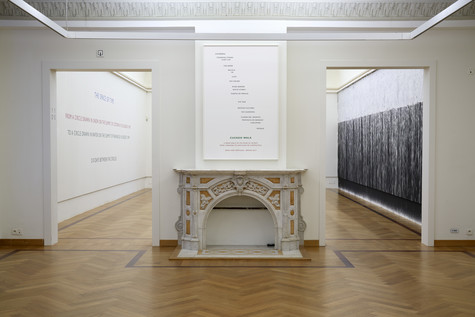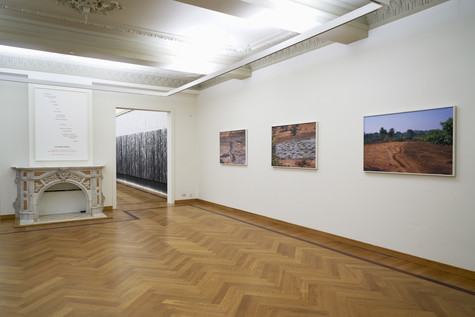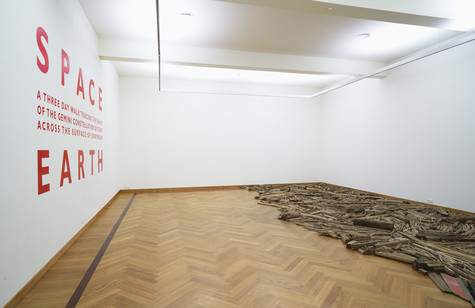Richard Long
Richard Long about his exhibition in M
You have built your exhibit around the theme of the Big Bang. Did you know the work of Lemaître, the founder of that theory?
"When I was a young artist, I read 'The ABC of Relativity' by Bertrand Russell. That opened up a world for me. I think Lemaître knew Einstein as a friend and colleague. When I was at Princeton making the monumental sculpture Slate Oasis, I visited Einstein's office there."
“Paul Dirac devised very elegant equations to describe quantum mechanics. To my great surprise, I recently discovered that he is from my home town of Bristol, and that we went to the same school there and was married in the church where we had our scouting trips. So many connections..."
The Big Bang theory holds that the universe is constantly evolving and that everything in it was once tightly connected. How does that tie in with your approach to space and time?
“Space and time have always been important subjects in my work, especially as a walking artist. Our world is also constantly changing, but on a smaller scale. All those different scales interest me: the geological time scale of mountains compared to the life of a butterfly. I have made sculptures in which I used stones as a metaphor for quantum particles In M you will be able to see Entropy Stones. An expansion work: a compact pile of stones, which I took over a long distance and spread out again one by one."
You are going to make a new mud work for the exhibition on the walls of the museum. Do you know what form that will take?
"I know I'm going to make two, a circle and a line and I already know how I'm going to make them: random, fast, with my right hand. I am interested in the power and beauty of the whole image, but also in the 'cosmic' variation of the details on a micro-scale: the splashes and the non-repeating patterns. A mud work shows the nature of water and gravity."
What do you hope visitors will experience at your exhibition?
"I hope that the visitors will love what they see. That they have a great experience of images and materials and ideas and places, near as well as far."
Many of your works become part of the landscape and change with the landscape. A passer-by might not even notice they are there. But the photographic works you make of them do not change. People come to the museum especially to see them. For you, is there a hierarchy in those two aspects of your art?
“I love the idea that I can put my art out into the world in many different ways. The sculptures and mud works feed the senses, the texts and photo works feed the imagination. There is no hierarchy. Some of my work is public – you'll find it in museums or books. Other parts are almost imperceptible, or very remote or non-permanent – in mountains or in the desert. All these forms are complementary. They reflect the variation in my art, some of the choices I've made, and the limitations and benefits I've experienced in my life."
Richard Long: 22.10.2021 - 20.03.2022


